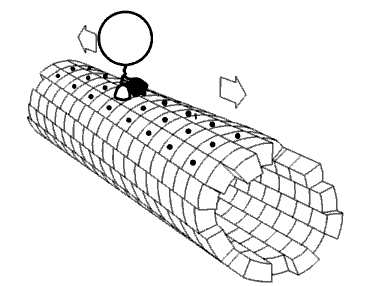
Photo from academic.microsoft.com
Ionizable residues buried in dry or hydrophobic environments in proteins can have extremely anomalous pKa values (pKa > 10 for Asp and Glu, pKa 5 for Lys). These buried ionizable… Click to show full abstract
Ionizable residues buried in dry or hydrophobic environments in proteins can have extremely anomalous pKa values (pKa > 10 for Asp and Glu, pKa 5 for Lys). These buried ionizable groups are involved in many forms of biological energy transduction. Their anomalous pKa values are usually essential for function in many pH-driven processes. Anomalous pKa values impart unusual pH sensitivity to the stability of the folded state. Previously we examined energetic consequences of burial of Lys, His, Arg, Asp and Glu in hydrophobic environments systematically, using staphylococcal nuclease (SNase) as a model system. With NMR spectroscopy and X-ray crystallography we have now characterized a variety of different types of conformational reorganization coupled to the ionization of these buried groups. Not only are conformational transitions driven by the binding or release of an H+ the basis of many H+-coupled energy transduction processes (e.g. ATPase), the detailed structural characterization of locally, partially or subglobally unfolded forms of SNase has also contributed a unique perspective on its folding landscape. When they occur, these structural transitions determine the magnitude of the shift in the pKa of internal groups. We have now also demonstrated that the unusual properties of buried ionizable groups can be harnessed to engineer proteins capable of acting as pH sensors and pH-driven switches. These switch proteins are sensitive to changes in pH in the physiological range despite using Asp, Glu or Lys residues for purposes of pH sensing. I will describe specific examples illustrating general and transferable engineering principles that may be used to turn any protein into a pH-sensitive protein with structure or function that can be modulated by small changes in pH in the physiological range.
Journal Title: Biophysical Journal
Year Published: 2017
Link to full text (if available)
Share on Social Media: Sign Up to like & get
recommendations!